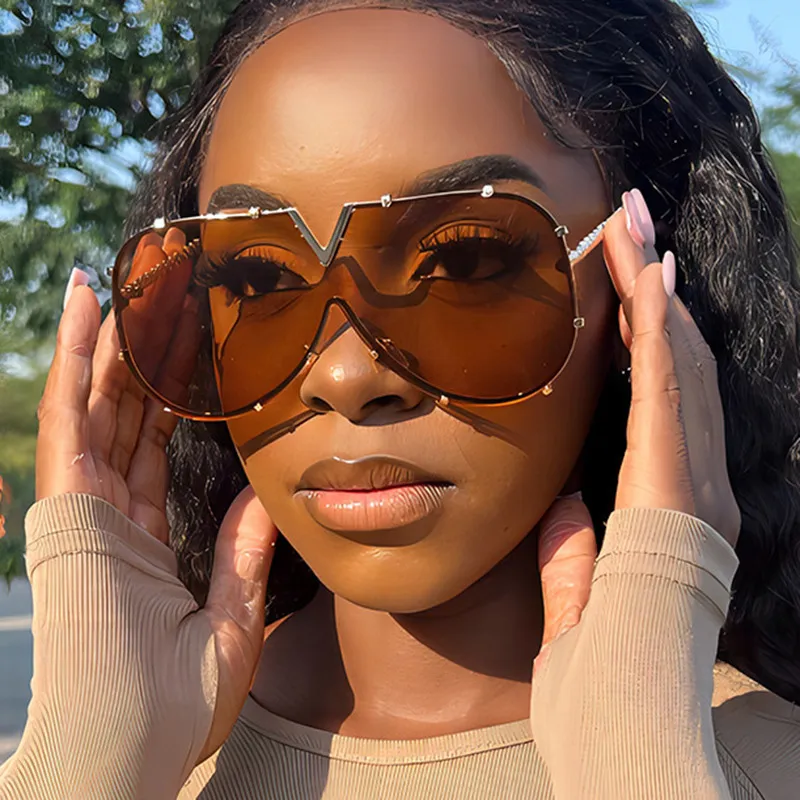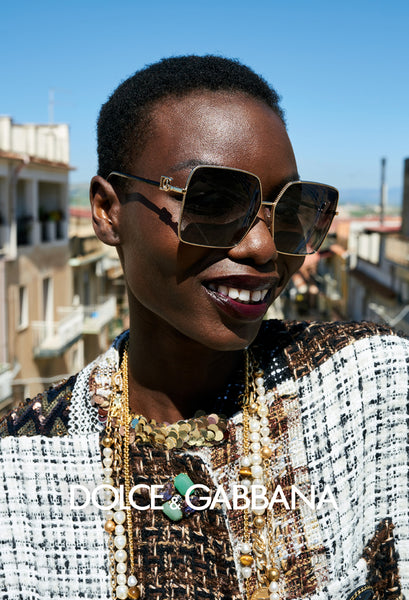Stylish Sunglasses for Women: 2025 Trends You Need to Know
What to Consider in Getting Sunglasses: A Detailed Acquiring Guide
Choosing the ideal sunglasses entails more than just choosing a stylish pair. Trick elements consist of UV security, lens kinds, and framework materials. Best Sunglasses for women. Comfort and fit are additionally essential for daily wear. Comprehending lens colors and polarization can improve visual clearness. Furthermore, brand name reputation and guarantee alternatives play a substantial role in ensuring a smart investment. Each aspect calls for mindful factor to consider to secure one's eyes successfully. What should one prioritize first?
Recognizing UV Protection and Lens Kind
When choosing sunglasses, understanding UV security and lens kinds is crucial for making sure eye safety and security and convenience. Ultraviolet (UV) rays from the sunlight can trigger considerable damages to the eyes, leading to conditions such as cataracts and macular degeneration. Reliable sunglasses must obstruct 100% of UVA and UVB rays, providing vital protection.Lens kinds additionally play an essential function in the functionality of sunglasses. Polarized lenses lower glow from reflective surfaces, making them perfect for activities like driving or water sporting activities. Gradient lenses, which are darker on top and lighter near the bottom, appropriate for general usage and outdoor tasks. Additionally, photochromic lenses readjust their tint based on light conditions, providing adaptability. Ultimately, focusing on UV security along with the appropriate lens type improves both security and visual quality, enabling individuals to enjoy outside tasks without compromising eye wellness.
Frame Designs and Products
Picking the right structure style and product is just as important as comprehending UV defense and lens types. Various framework styles can substantially affect both aesthetics and functionality. Usual styles consist of pilots, wayfarers, and cat-eye, each catering to distinct tastes and face shapes.Materials used in sunglasses frames differ widely, impacting sturdiness, weight, and convenience. Plastic frameworks, commonly lightweight and economical, are appropriate for informal wear. Metal frames, while generally more durable, can be much heavier however offer a timeless appearance. Additionally, there are environment-friendly options made from lasting products, appealing to ecologically aware consumers.The choice of framework material can additionally influence the total fit and feeling of the sunglasses. For those who focus on fashion or performance, recognizing the nuances of framework styles and products guarantees an educated purchase that lines up with individual style and lifestyle requirements.
Convenience and Fit Considerations
When selecting sunglasses, the shape of the framework plays a vital duty in attaining a comfortable fit. A correct nose bridge fit is vital, as it helps prevent slipping and pain throughout wear. Understanding these elements can greatly enhance the overall experience with sunglasses.
Frame Shape Relevance
The form of sunglasses frameworks plays a necessary duty in identifying overall convenience and fit. Numerous structure forms, such as round, square, and aviator, cater to different facial structures, affecting how well the sunglasses rest on the face. A well-matched structure form can improve stability and reduce stress points, making long term wear more pleasurable. As an example, rounded structures might soften angular features, while square frameworks can include meaning to softer facial contours. Furthermore, the frame's size should line up with the wearer's face, ensuring perfect assistance. Ultimately, choosing the right structure shape is important for balancing style with comfort, as the incorrect selection can result in pain, slippage, or constant adjustments throughout the day.

Nose Bridge Fit
Typically ignored, the fit of the nose bridge is crucial for making sure comfort and security in sunglasses. A correct nose bridge fit can protect against gliding, pinching, or pain throughout extended wear. Sunglasses usually feature various nose bridge sizes-- slim, medium, and large-- to suit differing face frameworks. Individuals with higher or lower nose bridges may need particular styles to accomplish ideal fit. Flexible nose pads can also boost customization, permitting users to change the fit for individual comfort. It is necessary for customers to try on sunglasses to evaluate how they hinge on the nose without creating irritation. Inevitably, the best nose bridge fit contributes considerably to the general performance and satisfaction of using sunglasses.
Lens Shade and Tints
Lens shade and colors play an important function in improving visual comfort and security from unsafe UV rays. Different tones can influence perception and contrast, making it necessary to select suitable alternatives based on certain tasks and environments. Understanding the effects of various colors can assist customers select sunglasses that ideal fit their needs.
Various Lens Colors
What aspects should one think about when picking lens shades for sunglasses? Different lens shades offer numerous objectives and can improve visual comfort. Grey lenses lower brightness without distorting shades, making them suitable for basic use. Brownish and amber have a peek at this website lenses boost contrast, enhancing depth perception, which is useful for outside tasks. Yellow lenses are reliable in low-light conditions, supplying quality and enhanced exposure. Eco-friendly lenses minimize glare while preserving shade balance, appropriate for sporting activities and exterior lovers. Furthermore, mirrored coverings can further reduce glow and enhance design. Individual preference additionally plays an essential duty, as individuals might select shades based on aesthetic charm or details tasks. Comprehending these factors help in picking the most suitable lens color for one's requirements.
Results of Tints

Picking Proper Shades
Just how can one identify the most effective lens shade and color for their certain needs? Numerous lens colors and colors offer different objectives, affecting aesthetic comfort and quality. Gray lenses work for decreasing total illumination while protecting natural shade balance, making them optimal for daily usage. Brown and amber tints boost contrast and deepness weblink understanding, appropriate for outdoor activities like treking or angling. Yellow lenses enhance presence in low-light conditions, useful for overcast days. Polarized lenses, no matter color, decrease glow from reflective surfaces, boosting safety and comfort. It is necessary to think about individual activities and environmental problems when choosing lens shades, making certain peak efficiency and protection from harmful UV rays. Tailoring choices to certain demands boosts the overall experience with sunglasses.
Polarization and Glare Reduction
Why is polarization vital in sunglasses? Polarization plays a vital function in boosting aesthetic comfort and quality. Sunglasses with polarized lenses are created to filter out horizontal light waves, which are mostly accountable for glow. This capacity significantly decreases reflections from surface areas such as water, roads, and snow, making them especially valuable for tasks like driving, angling, or skiing.Glare can create eye stress and pain, impairing vision and possibly bring about mishaps. Polarized lenses enhance contrast and shade assumption, enabling a clearer view of the surroundings.When thinking about sunglasses, individuals must search for polarized options to boost their outside experience. While these lenses provide distinctive advantages, it is necessary to validate that the sunglasses additionally provide appropriate UV defense. With each other, polarization and UV protection create an extensive remedy for preserving eye wellness and total visual convenience in bright problems.
Brand Name Track Record and Service Warranty Options
Several factors contribute to the option of sunglasses, brand name credibility and guarantee alternatives considerably influence customer choices. Brands with a solid track record usually suggest high quality and dependability, as they are usually established and trusted by consumers over time. Consumers often are attracted towards identified names that assure toughness, style, and security from damaging UV rays.Additionally, service warranty alternatives play a necessary role in the acquiring decision. A complete guarantee can offer confidence, covering issues and using fixings or substitutes. This secure urges confidence in the product's longevity and performance. Customers must examine the size and terms of the guarantee, as well as the brand name's customer support reputation, to ensure they are making an educated decision. Eventually, the mix of brand track record and service warranty choices can especially affect the viewed worth and satisfaction derived from a set of sunglasses.
Often Asked Questions
How Do I Tidy and Preserve My Sunglasses Appropriately?

Can I Wear Prescription Glasses With Sunglasses?
Putting on prescription glasses with sunglasses is feasible via numerous Related Site options, including clip-ons or prescription sunglasses. This mix guarantees clear vision and security from UV rays, enabling people to delight in outside tasks conveniently and stylishly.
Are Expensive Shades Well Worth the Investment?
The worth of pricey sunglasses frequently lies in remarkable products, better UV protection, and enhanced toughness. For some people, this investment guarantees long-term eye health and style, making it worthwhile despite the greater first price.
What Is the Perfect Lens Size for My Face?
Determining the perfect lens width entails determining facial features. Normally, bigger lenses fit broader faces, while narrower lenses enhance slimmer profiles. Best Sunglasses for women. Individual comfort and design choices ultimately lead the option for best fit and appearance
Exactly how Often Should I Replace My Sunglasses?
The regularity of sunglasses replacement relies on usage and wear. Commonly, individuals must take into consideration changing them each to 2 years, specifically if lenses are damaged, frameworks are harmed, or UV security reduces with time.